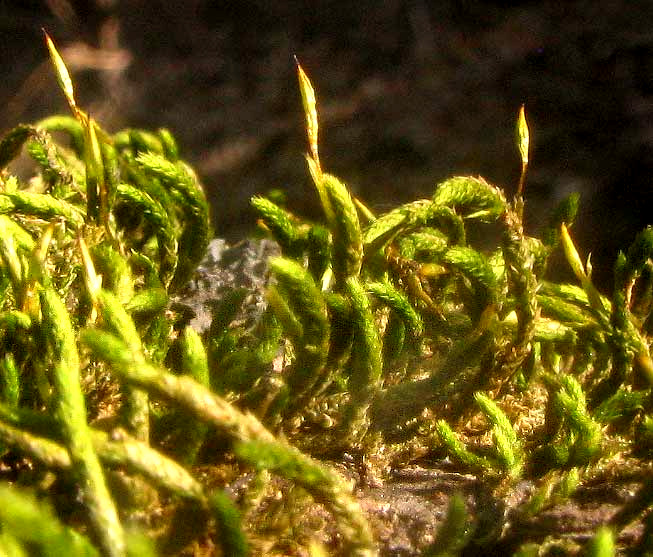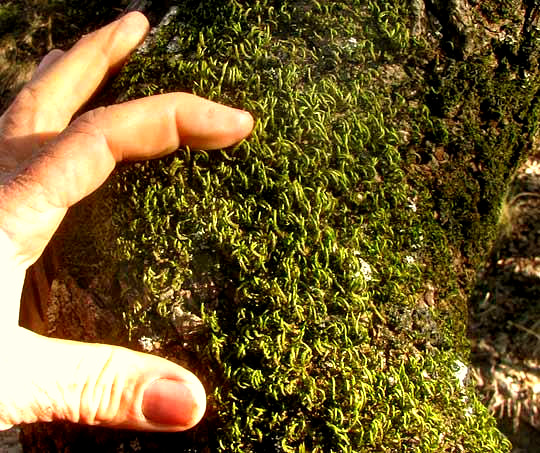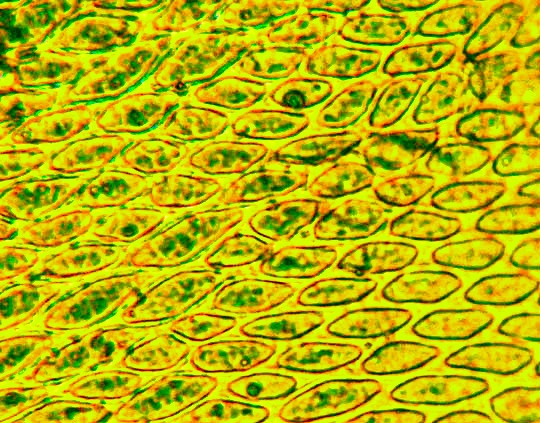Excerpts from Jim Conrad's
Naturalist Newsletter

from the February 16, 2014 Newsletter issued from the Frio Canyon Nature Education Center in the valley of the Dry Frio River in northern Uvalde County, southwestern Texas, on the southern border of the Edwards Plateau; elevation ~1750m (~5750 ft); N29.62°, W99.86°; USA
COMMON THELIA MOSS
It's so arid here that you don't see many mosses, but when you do it's something special needing a closer look. And the first thing you check for is whether they have capsules, for normally they're needed for a good identification. The other day, however, a species came along that just from its general growth pattern it was recognizable as a species I've seen a lot of in the East.
With tough, vertically climbing stems issuing many upward-curving side stems, the plant formed a dense, coarse, yellowish green mat on a liveoak trunk leaning across an arroyo. It was a good place for absorbing humidity from wind streaming down the rarely flowing stream. You can see it below:

Though it was an extensive patch, it bore only a few capsules, and they were somewhat immature, but at least you could determine that they arose from the moss's stems and not from the stem tips as in many moss species. You can see the capsules at the top of this page.
Having snipped off a branch, back home under the microscope the tiny leaves showed themselves as broad-based but coming to a slender, sharp tip, and with leaf margins bearing low teeth, as shown below:

Leaf cells were very distinctly thick-walled and diamond-shaped, as shown below:

Back East this well known moss is called the Common Thelia. It's THELIA HIRTELLA, in North America distributed from Nova Scotia to Kansas, and south through Florida and Texas into northeastern Mexico and the Dominican Republic. We're on the extreme western limit of distribution, which may explain why our moss's leaves aren't as hairy-margined as the literature says they usually are; individuals at distribution fringes often differ a little from those in the population's center.
An interesting word turning up in descriptions of the Common Thelia is "julaceous." It means "like an ament," or "bearing aments," an ament being a spike-like cluster of flowers without petals, with each flower associated with a scale. Ament scales normally are so close-packed and overlapping that the exposed tips of the aments give the stem a cylindrical and coarse look. Leaves on the Common Thelia are similarly close-packed and overlapping, creating tough, cylindrical stems.